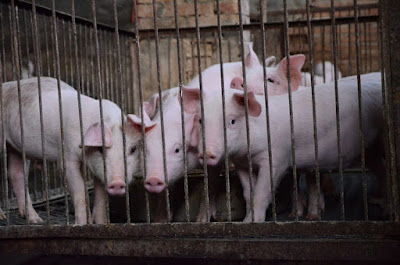 |
| How safe is your food source? |
The Safety Relationship Between Global and Domestic Food Production
Technology and Convenience Linked to Food Safety
In addressing the need for convenience for busy working families, a few major players in the farming business devised bagged salads for lettuce and spinach. These are prewashed greens that are meant to be safer, but are they really? The reason this method of preparation may be dangerous is because the greens are harvested at a much younger stage. Lettuce, spinach or other greens mature the traditional way and have longer leaves that limit the passage of Listeria, salmonella or E. coli compared to a more vulnerable leaf from an immature plant.
All it takes is just a couple of heads of contaminated lettuce, chopped and then distributed through other bags to cause an outbreak or even death. Once contaminated, these harmful bacteria cannot always be cleaned. However, you can wash your greens in a basin with water and a tablespoon or two of vinegar. Afterwards, wash your hands carefully for least twenty seconds before touching your greens and rinsing them with fresh water a second time.
A Helpful Idea for Safer Locally Grown Food
Wouldn’t it be nice if there was a community garden where you lived? Many people don’t have the space or the need to grow their own fresh vegetables, fruits and herbs. Yet, many others may like to have a hobby and tend the garden. It would be a great way to meet your neighbors and share food and expenses for planting the garden.
The Safety of Growth Promoting Hormones and Antibiotics in Meats
Cooking Meats Thoroughly Can Lower Your Chances of Potential Illness
According to the USDA, meats basically need an internal temperature of between 145-160 degrees Fahrenheit, depending on the variety. For example, ground beef and eggs need to be cooked to 160-degrees Fahrenheit. Poultry should register at 165-degrees Fahrenheit. Steaks, pork chops and roasts must be cooked to 145-degrees.
National Antimicrobial Resistance Monitoring System Is Hope for the Future
There is still a lot of lead way for those that raise cattle, hogs, poultry when it comes to the amounts of antibiotics and hormones the animals are fed. The reason for this is because those business owners are not required to disclose by law what drugs and dosage were used before going to market. Therefore, data of the precise effect of health and the link to those drugs are still being studied. Nonetheless, the government established an agency called the National Antimicrobial Resistance Monitoring System just to regularly test bacteria from animals, people and the meats we consume for resistance to some common drugs, which is a hopeful beginning.
What We May Be Risking With Genetically Modified Plants
Corn and soy were big crops that are now genetically modified for their added value for the manufacturing of processed foods. After all, the chemical engineers can alter the plants old DNA and make it stronger from insects feeding and other chemicals it may usually be subject to. When you change the plant’s structure, you also change how a body will respond to the altered food. This modification could spur new allergies in certain people.
Though as alarming as that thought may be, it is even worse when seeds are modified not to be grown again just for the sake of profits. With all the hunger in the world, why would anyone think of such a thing?
Does This Mean Organic Offers the Safest Food?
Turning to foods labeled “organic” does not necessarily mean that they are totally healthy alternatives. All that label promises is that the food is not grown with commonly used pesticides, antibiotics or fertilizers. What you want to do is to dig deeper and search for more than just organic with sustainable farming when researching.
